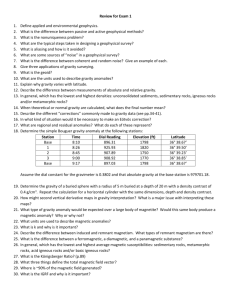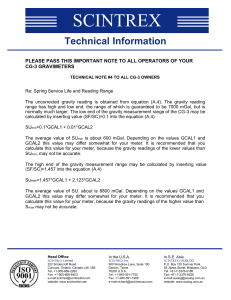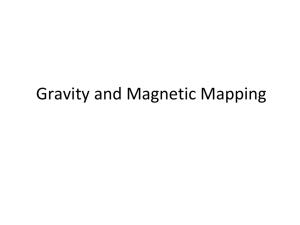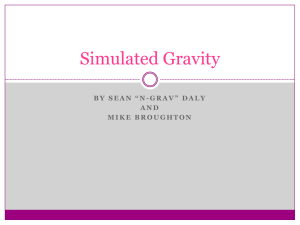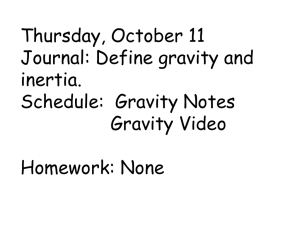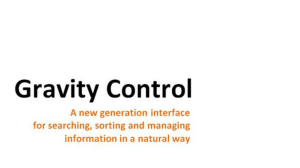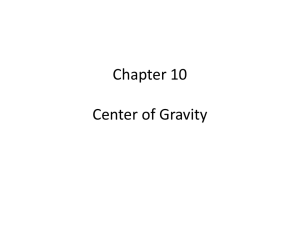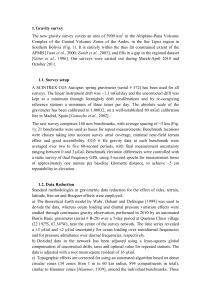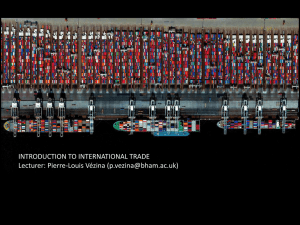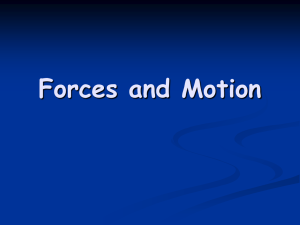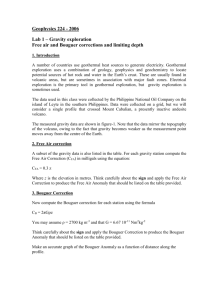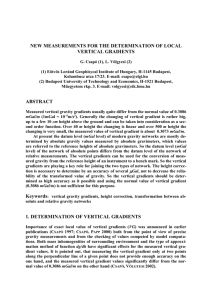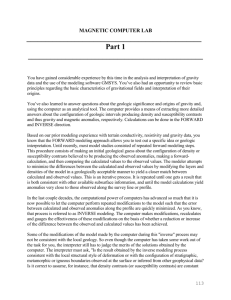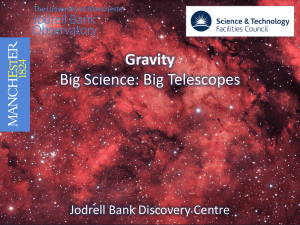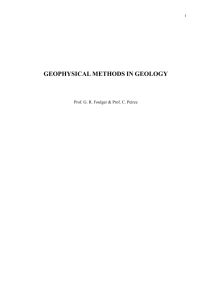Remote Sensing in Geology
advertisement
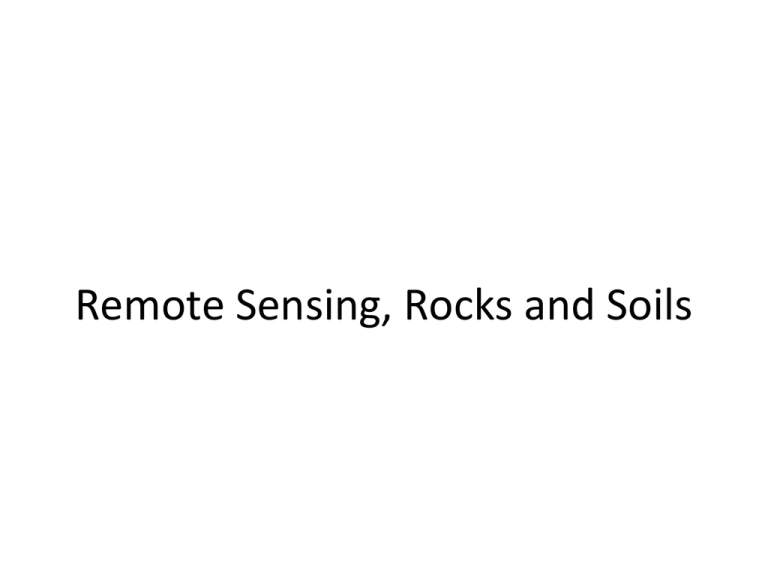
Remote Sensing, Rocks and Soils Prospecting and Exploration • What we’re looking for is subtle • Most rocks, even the most favorable, do not have extractable resources • 1% of mineral occurrences are worth detailed study • 1% of those are worth drilling • 1% of those are worth mining Geologic Map of Wisconsin Gravity Map of Wisconsin Gravity Mean value about 9.8 m/sec2 = 1 g About 0.5% smaller at equator than poles Map unit = gal (for Galileo) = 1 cm/sec2 Mean gravity = 980 gal Maps contour in mgal = 10-6 g Modern gravimeters can detect .001 mgal variations (= 1 ppb) • A gravimeter is essentially a spring balance. • • • • • • Gravimeter Gravity Maps • Gravity varies by latitude due to earth’s equatorial bulge and centrifugal force • Need altitude correction = 0.3 mgal/m = 3 x 10-7 g/m • Altitude only correction = Free-Air Anomaly Map • Correct for mass between you and sea level = Bouguer Anomaly Map • Correct for variations in thickness of crust = Isostatic Anomaly Map Colorado Bouguer Map Colorado Isostatic Map Chicxulub Impact Basin Gravity Map Gravity Mapping • Simple corrections for latitude and altitude • Density = Lithology • Can sense deep into crust • Gravimeters are basically sensitive spring balances • Fragile • Prone to drift • Discrete data points • Labor intensive, low detail Magnetic Map of Wisconsin Geomagnetism • Magnetic field of Earth = 40 microtesla = 40,000 nt • Varies from 25 to 70 mt • Non-axial • Not centered on the earth • Varies over a human lifetime Overall Magnetic Field of Earth MAGSAT Map of Earth Magnetic Mapping • Corrections are complex and time variable • No simple correlation with lithology • Can’t sense deep into crust because heat destroys magnetism • Magnetism is electromagnetic phenomenon • Instruments can be purely electronic • Can record continuously • Can be extremely detailed Gravity and Magnetic Mapping • Greater sensing depth • Complex corrections • Greater detail possible Gravity and Magnetic Mapping Gravity maps Magnetic Maps Mechanical Instrument Instruments are purely electronic Discrete readings Continuous readings Less detail Great detail Can sense to great depths Can sense only a few kilometers deep Simple corrections for latitude and elevation Complex corrections in time and space Density correlates with rock type No simple correlation with rock type Satellite Image of Wisconsin Grand Canyon Lake Vostok, Antarctica Copper Mines, Iran Saline Valley, California The Moon Mercury Mars False Color View Remote and Not So Remote Sensing Telling Minerals Apart Martian Minerals? Absorption Bands Radar Interferometry: L’Aquila, Italy, 2009 Haiti, 2010 Haiti, 2010 Damage, Port au prince Chile, 2010 Chile 2010 Chile, 2010, GPS Ice Flow, Antarctica Kilauea, Hawaii Venus Topography of Venus Radar Map of Venus Radar Map of Venus Venus Gravity Maps Gravity Map of Mars Titan Radar Image, Titan Lakes on Titan Sun Glint Laser Rangefinder Laser Reflector LAGEOS Herstmonceaux Castle (London) • Latitude increasing (moving N) • Longitude increasing (Moving E) Lamont Earth Observatory (Near New York) • Latitude increasing (moving N) • Longitude decreasing (Moving W) Trans-Atlantic Plate Motion • New York moving west at 15.4 mm/yr • London moving east at 16.6 mm/yr • Relative motion = 32 mm/yr Churchill, Manitoba • Latitude decreasing (moving S) • Longitude decreasing (Moving W) • Rising rapidly Real-Time Plate Motions Sturgeon Bay, Wisconsin
